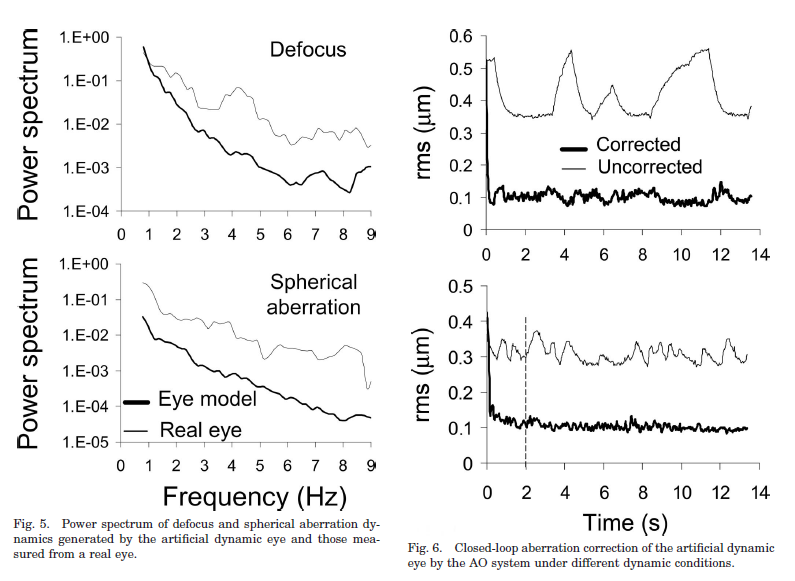An artificial dynamic eye model is proposed. The prototype enabled us to introduce temporal variations in defocus and spherical aberration, resembling those typically found in the human eye. The eye model consisted of a meniscus lens together with a modal liquid crystal lens with controllable focus. A diffuser placed at a fixed distance from the lenses acted as the artificial retina. Developed software allowed the user to precisely control the dynamic generation of aberrations. In addition, different refractive errors could simultaneously be emulated by varying the distance between the components of the model. The artificial eye was first used as a dynamic generator of both spherical aberration and defocus, imitating the behavior of a real eye. The artificial eye was implemented in an adaptive optics system designed for the human eye. The system incorporated an electrostatic deformable mirror and a Hartmann–Shack wavefront sensor. Results with and without real time closed-loop aberration correction were obtained. The use of the dynamic artificial eye could be quite useful for testing and evaluating adaptive optics instruments for ophthalmic applications.
Buscar
Categorías
Archivos
- diciembre 2025 (2)
- octubre 2025 (7)
- junio 2025 (2)
- mayo 2025 (1)
- marzo 2025 (4)
- diciembre 2024 (4)
- octubre 2024 (5)
- septiembre 2024 (1)
- julio 2024 (8)
- junio 2024 (1)
- mayo 2024 (1)
- marzo 2024 (1)
- octubre 2023 (2)
- julio 2023 (5)
- junio 2023 (1)
- julio 2022 (10)
- mayo 2022 (1)
- marzo 2022 (1)
- julio 2021 (5)
- marzo 2021 (2)
- octubre 2020 (36)
- septiembre 2020 (122)
- agosto 2020 (10)
- julio 2020 (38)
- abril 2020 (1)
- diciembre 2019 (1)
- abril 2018 (1)
- septiembre 2017 (2)

Dynamic eye model for adaptive optics testing
- Voptica
- Publicaciones de VAO
Journal:
Optics Express
Year:
2007
Link:
Authors:
Enrique Josua Fernández, Pablo Artal